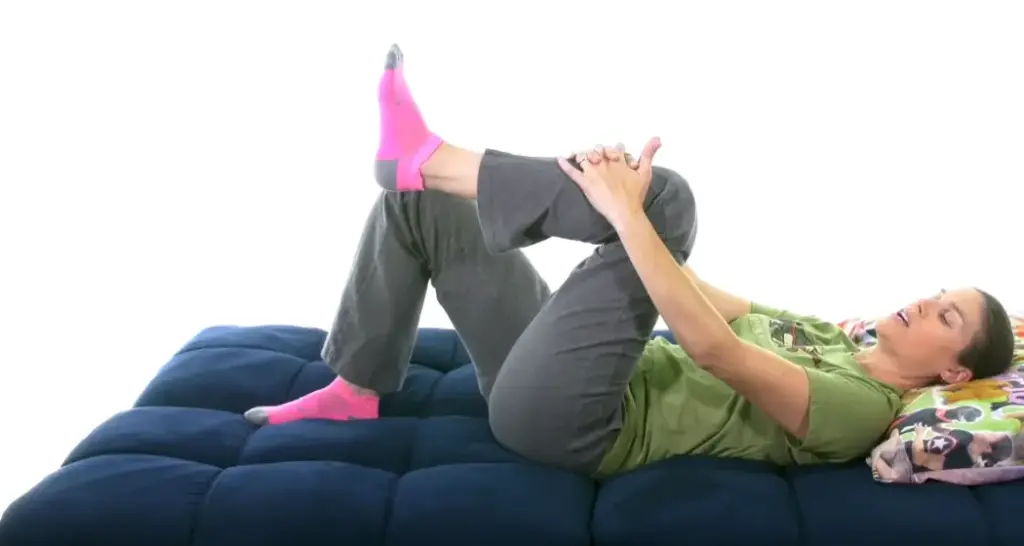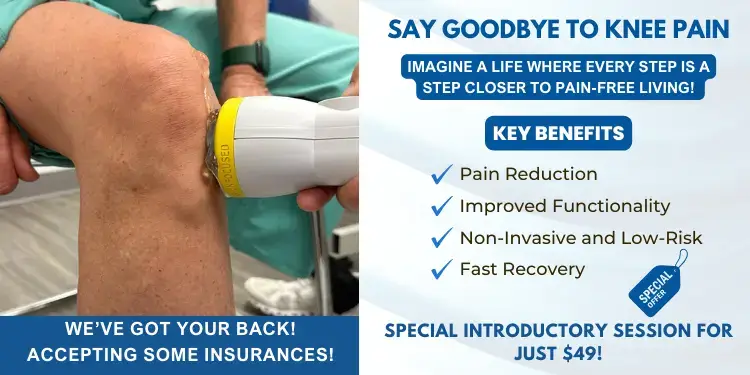Driving can be a pain in the knee, literally. Many people experience knee pain after driving long distance, and it can seriously put a damper on the joy of cruising down the highway. But fear not, for understanding the causes of this knee pain can help you find relief and enjoy those road trips. This article will investigate the typical causes of causes of knee pain from driving, the importance of ergonomics and proper driving posture for knee health, and some stretching and strengthening exercises to alleviate that annoying discomfort.
Key Takeaways
- Adjusting your seat position and ensuring proper leg posture leg posture can significantly reduce the risk of knee pain from driving.
- Incorporating regular breaks to stretch and walk around can alleviate knee pain after driving long distance.
- Using supportive cushions or seat covers can provide additional comfort and help minimize knee pain.
- Keeping a healthy weight and staying active through participating in regular exercise can prevent knee pain by decreasing joint stress.
- Seeking guidance from a physical therapist can lead to personalized exercises and stretches that target knee pain relief.
Understanding the Causes of Knee Pain From Driving
Knee pain from driving can often be attributed to a variety of common issues that drivers may encounter. Persistent pain or swelling that doesn’t improve with rest may be indicative of a more serious underlying condition. It’s important to be aware of symptoms such as a reduced range of motion, which could signal a significant injury or underlying knee problem.
Common knee issues include:
- Trauma or overuse injuries
- Sports-related damage
- Conditions like osteoarthritis
- Knee tendonitis, often due to repetitive activities
If you experience a popping or crunching noise, or if you find it difficult to perform daily activities, these could be signs of ligament damage or a meniscal tear.
In cases where there is a fever, warmth, or redness around the knee, or if the skin color changes, it’s crucial to seek medical advice as these may be signs of infection or other serious conditions such as knee bursitis.
The Impact of Repetitive Motion
Repetitive motion is a significant factor in driving-related knee pain. The continuous use of the knee for operating pedals can lead to overuse injuries, such as tendonitis or bursitis. This is especially true for those who drive long distances regularly or whose jobs involve frequent driving.
The key to reducing the impact of repetitive motion is to understand the strain it places on the knee structures and to take proactive measures to alleviate it.
To mitigate the effects of repetitive motion, consider the following tips:
- Adjust your seat to ensure your knee is slightly bent when pressing the pedals.
- Use cruise control on long drives to give your legs a break.
- Change your foot position periodically to avoid maintaining the same angle for too long.
Remember, the goal is to minimize the stress on your knees by altering the way you interact with your vehicle’s controls.
Pre-existing Knee Conditions
For individuals with pre-existing knee conditions, driving can pose a significant challenge. Conditions such as arthritis, tendonitis, or a history of knee injuries can be aggravated by the demands of driving. The constant movement and pressure required to operate a vehicle can lead to increased pain and discomfort.
It’s crucial to understand that pre-existing conditions can impact your ability to drive comfortably and may require additional measures to manage pain effectively.
Common pre-existing knee conditions that can affect driving comfort include:
- Arthritis
- Tendonitis
- Meniscal tears
- Patellofemoral pain syndrome
Each of these conditions can lead to a heightened sensitivity to the repetitive motions involved in driving, such as braking and accelerating, which can exacerbate knee pain.
Ergonomics and Proper Driving Posture for Knee Health

Adjusting Seat Position
Proper seat adjustment is crucial for preventing knee pain during driving. Begin by ensuring your knees are slightly bent and at the same level as your hips when your feet rest on the pedals. This helps to reduces the risk of strain on the knees and maintain a neutral spine. Here are some key points to consider:
- Seat Bottom: Adjust the tilt to keep your pelvis neutral. Your back should feel fully supported.
- Seat Back: Set the angle between 90-110 degrees to avoid slouching or overextending.
- Seat Height: Keep your thighs parallel to the floor, with feet flat. Use a cushion if needed to achieve this position.
Making ergonomic adjustments to your seat can significantly enhance your driving experience and mitigate discomfort. Remember to adjust all mirrors to minimize the need to twist or strain your neck while driving.
Fully depressing the clutch and accelerator should not require overextending your legs. If you find yourself reaching, consider pedal extensions to bring the controls within a comfortable distance.
Positioning the Steering Wheel
Proper steering wheel positioning is crucial for maintaining a comfortable driving posture and reducing the risk of knee pain. Ensure the steering wheel is close enough to allow for a relaxed grip and slightly bent elbows. This position should prevent you from having to stretch your arms out fully, which can lead to upper body tension and increased pressure on your knees.
Adjust the steering wheel so that it is about 10 inches from your chest, promoting shoulder relaxation and reducing the need to overreach. This adjustment not only aids in knee comfort but also enhances overall driving ergonomics.
Remember to make these adjustments while the vehicle is stationary to ensure safety and accuracy:
- Seat Bottom – Tilt for a neutral pelvis position, ensuring back support.
- Seat Back – Set the angle between 90-110 degrees with lumbar support.
- Steering Wheel – Maintain a 10-inch distance from the chest.
- Pedals – Depress fully without overextending legs.
- Mirrors – Adjust to minimize neck strain and maintain posture.
Optimizing Foot Pedal Placement
Proper foot pedal placement is crucial for maintaining knee alignment and preventing discomfort during driving. To optimize pedal placement, follow these guidelines:
- Ensure that you can fully depress the clutch and accelerator without overextending your legs. This prevents strain on the knees and helps maintain control of the vehicle.
- Keep your foot in a natural position, avoiding excessive angling which can lead to knee pain.
- Adjust the seat tilt to support a neutral pelvis, which in turn supports proper leg alignment.
Remember, the goal is to create a driving environment that supports your body’s natural posture, reducing the risk of knee pain.
By adhering to these ergonomic principles, you can help alleviate knee pain and make your driving experience more comfortable. It’s also important to maintain Hip/Knee/Foot alignment throughout your drive, as misalignment can contribute to knee issues.
Exercises and Stretches for Knee Pain Relief

Simple Stretches During Breaks
Incorporating simple stretches during breaks can greatly alleviate knee pain and enhance overall comfort while driving. Taking short breaks to stretch is essential, especially during long drives. Aim for a brief pause every hour to perform a series of stretches focusing on the muscles supporting the knee joint.
- Back rotations: A gentle twist for the spine, rotate your torso side to side, looking over each shoulder. Repeat 5-10 times.
- Leg swings: Stand and swing each leg forward and back, keeping your posture straight. This dynamic movement helps to warm up the leg muscles.
- Hamstring stretch: Sit with one leg extended, lean forward towards your toes, holding the position for 15-30 seconds. Switch legs and repeat the process.
Remember, the goal of these stretches is not just to provide temporary relief, but to contribute to long-term knee health. Regular stretching can reduce muscle tension, improve circulation, and enhance overall performance.
For those who may find floor exercises challenging, consider modifications such as lying down on a mat with legs extended or with knees bent and feet flat, as suggested by Benchmark Physiotherapy. This position can be more comfortable and just as effective for certain stretches.
Strengthening Exercises for Long-Term Relief
Integrating strengthening exercises into your daily routine can make a significant difference in alleviating knee pain. These exercises are designed to fortify the muscles around the knee, providing better support and stability for the joint.
Regularly engaging in exercises like leg lifts, hamstring curls, and squats can help prevent knee pain from driving by enhancing the strength of your leg muscles.
It’s important to focus on both improving strength and flexibility, as they are crucial for knee health. Here’s a list of exercises that can be integrated into your routine for long-term knee pain relief:
- Leg lifts
- Hamstring curls
- Squats
- Lunging hip flexor stretch
- Lying figure four stretch
Remember, consistency is key. Implementing regular training sessions will ensure that the benefits of these exercises are maintained over time.
Exploring the Benefits of Physical Therapy
Physical therapy extends beyond the realm of athletes, emerging as a pivotal element in combating knee pain associated with driving. A proficient physical therapist can tailor a regimen of exercises and stretches aimed at the knee, which not only mitigates pain but also fortifies the muscles in the vicinity. The personalized approach ensures that the therapy aligns with your specific needs, enhancing its effectiveness.
The advantages of physical therapy are manifold:
- Personalized care: Tailored exercises that cater to individual knee issues.
- Pain management: Techniques that help reduce discomfort and improve function.
- Muscle strengthening: Focused on improving the support around the knee joint.
- Education: Learning about knee mechanics and how to prevent further injury.
Embracing physical therapy can lead to a significant improvement in knee health, providing not just relief but also a proactive strategy to prevent future discomfort.
Remember, the goal of physical therapy is not only to alleviate current pain but also to equip you with the knowledge and skills to maintain knee health in the long term. It’s an investment in your mobility and quality of life.
Tips for Minimizing Knee Pain After Driving Long Distance
Taking Regular Breaks and Stretching
Long hours behind the wheel can take a toll on your knees, but taking regular breaks can significantly reduce discomfort. Aim to pause your drive every hour for a short 2-5 minute break. During these breaks, perform simple stretches to alleviate tension and promote circulation.
- Back rotations: Rotate your torso and look over each shoulder. Repeat 5-10 times.
- Leg swings: Gently swing each leg back and forth to warm up the muscles.
- Walking lunges: Step forward into a lunge and alternate legs to stretch the hip flexors.
Remember, incorporating these breaks is not just a temporary relief; it’s a proactive approach to maintaining knee health during long drives.
Additionally, consider setting reminders to ensure you don’t skip these crucial pauses. Stretching and moving around during breaks can help mitigate the risks of muscle stiffness and back pain, which are often associated with prolonged sitting. Finally, try using a heating pad or ice pack on your knees when you’re not driving to help reduce inflammation and alleviate pain.
Using Supportive Cushions or Seat Covers
Incorporating supportive cushions or seat covers can be a game-changer for those experiencing knee pain during long drives. Selecting the right cushion is crucial, as it can help to redistribute your weight and alleviate pressure on your knees. Experts have tested various products and recommend the Purple Ultimate Seat Cushion, Everlasting Comfort Seat Cushion, and the Bulb Head Egg Sitter Seat Cushion for optimal comfort.
When choosing a cushion, consider the following features:
- Material: Look for high-quality memory foam or gel cushions that offer both comfort and support.
- Shape: Wedge-shaped cushions are particularly beneficial as they can improve your seating angle and reduce strain on your knees.
- Care Instructions: Opt for cushions with removable and washable covers to maintain hygiene and durability.
It’s important to adjust the cushion to your personal comfort level and ensure it doesn’t interfere with your ability to control the vehicle.
Remember, a cushion is not just about comfort; it’s about maintaining the right posture and preventing further knee strain. Regularly switching out your cushion based on wear and tear or changes in your condition can also contribute to sustained knee health.
Adjusting Driving Duration and Frequency
Long drives can be a source of pride for many, but they can also be a source of discomfort, particularly for those with sensitive knees. Breaking up long journeys into shorter segments can significantly reduce the risk of knee pain. It’s not just the duration that matters, but also how often you embark on these extended trips. Limiting the number of long drives can help keep knee pain at bay.
Consider the following tips to adjust your driving habits:
- Plan your route to include regular breaks.
- Aim for a driving session of no more than 2 hours at a time.
- Schedule longer breaks of at least 15 minutes after every 2 hours of driving.
Remember, the goal is to prevent knee pain from becoming a constant issue. Adjusting the length and frequency of your drives is a proactive step towards maintaining knee health.
If you find that your knee pain persists despite taking these measures, it may be time to seek professional advice. A doctor or physical therapist can offer personalized strategies to help manage and alleviate your discomfort.
Preventive Measures: How to Avoid Knee Pain From Driving
Implement proper seat and steering wheel adjustments to maintain ergonomic posture, reducing knee strain during long drives. Incorporate regular breaks and simple stretches to promote circulation and alleviate tension, ensuring a comfortable and pain-free driving experience
Maintaining a Healthy Weight
Excess body weight can substantially increase the stress on your knees, particularly when seated for extended periods while driving. Keeping a healthy weight is essential for minimizing strain and preventing knee pain. A regular exercise and balanced diet are your best allies in achieving this goal.
- Healthy snacks: Opt for fresh fruits, vegetables, nuts, and protein bars over processed vending machine options.
- Whole grains: Incorporate oatmeal, whole wheat bread, and brown rice into your meals for essential fiber.
By making these dietary choices a habit, you not only support your knee health but also contribute to overall well-being. Regular consultation with a nutritionist can help tailor your diet to your specific health needs.
Remember, it’s not just about the occasional healthy choice; it’s about building a sustainable routine that supports your knee health in the long term.
Using Assistive Devices for Support
When it comes to managing knee pain while driving, assistive devices can be incredibly helpful.Knee braces or compression sleeves offer additional stability and can help alleviate discomfort, acting as a form of support for your joints. These devices are not just about physical aid; they also provide a psychological boost, much like a personal cheering squad for your knees.
Technology offers solutions that can seamlessly integrate into your daily routine. Smart knee braces with sensors, for example, monitor knee joint angles and force, providing real-time feedback to encourage proper posture and movement. Similarly, pressure-sensing insoles can be placed inside shoes to track weight distribution, aiding in balance and reducing knee strain.
In some cases, more substantial support may be necessary. Products like the Vive Car Assist Handle can be a game-changer for individuals with severe knee pain, especially when entering or exiting a vehicle. This device attaches to the door latch, offering a sturdy grip that helps you maintain balance and independence.
While assistive devices are helpful, it’s important to remember that they are part of a broader strategy for knee pain management, which should also include regular exercise and weight maintenance.
Incorporating Regular Exercise into Your Routine
Making exercise a regular part of your day is crucial for keeping your knees healthy. Participating in low-impact exercises such as cycling, swimming, or even short walks can significantly improve knee strength and flexibility. These activities are joint-friendly and can relieve knee discomfort, making them perfect for individuals with existing knee issues or anyone aiming to keep their knees healthy.
Regular physical activity not only supports knee health but also contributes to overall endurance and well-being. It’s essential to integrate exercises that target the leg muscles, as they play a pivotal role in supporting and stabilizing the knee joint.
For an effective and safe exercise routine, keep these points in mind:
- Start with exercises that are comfortable and within your pain-free range, gradually increasing intensity as your knees become stronger.
- Include diverse exercises to work different muscle groups and prevent boredom.
- Be consistent with your exercise regimen to reap long-term benefits for your knee health.
Remember, regular exercise is not just a remedy but a preventive measure. By making it a part of your lifestyle, you can mitigate the risk of knee injuries and enjoy a more active, pain-free life behind the wheel.
Conclusion
In summary, driving doesn’t have to be synonymous with knee pain. By understanding the common causes of discomfort while driving and following the tips in this article, you can enhance your driving experience to be more enjoyable and pain-free. Regular breaks and stretching, using supportive cushions, adjusting your driving duration, and maintaining proper ergonomics are all effective strategies. Remember to listen to your body and seek professional help if knee pain persists. With these measures in place, you can keep your focus on the road ahead and enjoy the journey, rather than being distracted by discomfort.
Frequently Asked Questions
What are the common causes of knee pain from driving?
Knee pain from driving can be due to repetitive motion, prolonged sitting, improper driving posture, and pre-existing knee conditions such as arthritis or previous injuries.
How can adjusting my seat position help alleviate knee pain?
Adjusting your seat to ensure your knees are slightly bent and at the same level as your hips, with feet on the pedals, helps prevent strain on your knees and maintains proper circulation.
Can supportive cushions or seat covers reduce knee pain after driving long distance?
Yes, investing in supportive cushions or seat covers can provide extra comfort and support, potentially alleviating knee pain after driving long distance.
Are there any exercises or stretches I can do to relieve knee pain caused by driving?
Simple stretches during breaks and strengthening exercises, as well as physical therapy, can target the knee area to alleviate pain and strengthen surrounding muscles.
I experience knee pain from driving. What can I do to prevent it?
Preventive measures include maintaining a healthy weight, using assistive devices for support, incorporating regular exercise into your routine, and ensuring proper driving ergonomics.
When should I seek professional help for my knee pain?
If knee pain persists or worsens, it’s crucial to consult a healthcare professional to develop personalized treatment recommendations and proper diagnosis. We offer that type of service here at Waters Edge medical Clinic. We are located here in St. Petersburg, Florida. You can reach us at 727-550-0855.


